Caterpillar Hunt
Sunday, May 18, 2008
A Good Crowd in the Rain
More than thirty adults and children braved intermittent rain to look for caterpillars near Hillwood Manor Park in lower Sligo on May 18, 2008. Our expert guide was John Lill, a specialist in insect-plant ecology at George Washington University and a native, and current resident, of the Sligo watershed. He was joined by his wife, an educator with the Audubon Naturalist Society, and their three young children.
After his introduction, John provided enough plastic containers for everyone and said we’d gather back at the table after venturing into the woods to collect.
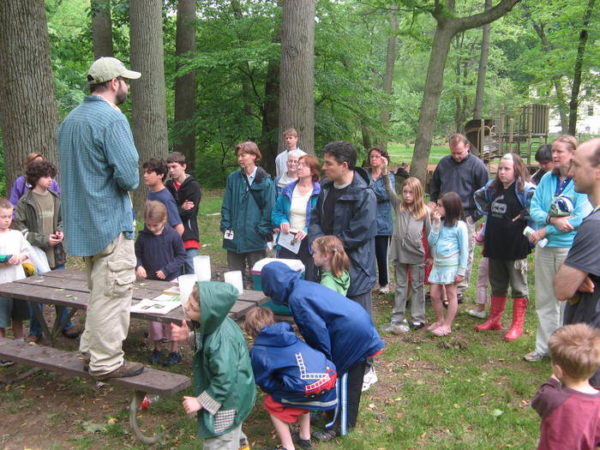
Insect Eggs
We all walked downstream across the bridge and into the upland on the left, where evidence of insect activity was easy to find. We found this egg-case for tent caterpillars; each case contains 200-300 eggs. This spring, we had the most caterpillars in our area in the last ten years.
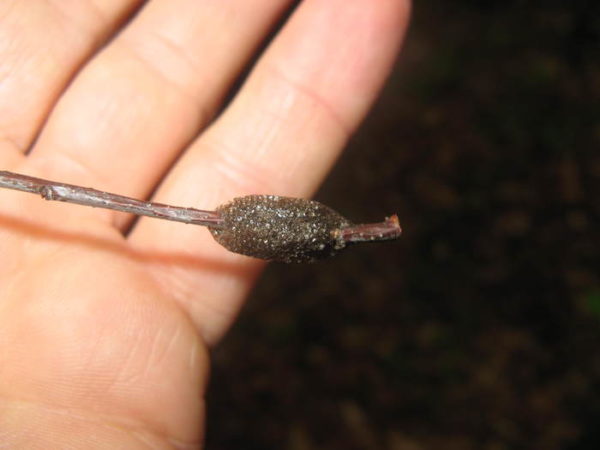
Giant Cocoon
One of the kids noticed this impressive insect cocoon attached to a leafless sapling. Inside is probably a developing Polyphemus Moth, one of the giant silkworm moths. Polyphemus caterpillars are particularly fond of oak, hickory, elm, maple, and birch.
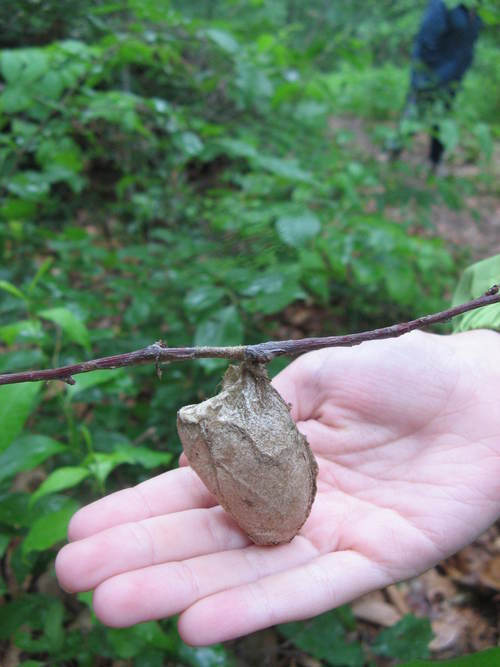
Galls, Galls, & Egg Masses
Many wasps, mites, midges and aphids lay their eggs in the fast-growing tissue of specific plants to provide the eggs with a nutritious environment. The depositing of eggs in spring seems to mimic a wound in the young leaf, inspiring the plant to pump nutrients to the area, forming a gall that feeds the eggs. Most galls do not inflict serious harm on the host trees. Our young hunters found a variety of colorful galls on maple, elm, oak, and other trees, as well as a spider’s egg-mass in the lower-left photo.
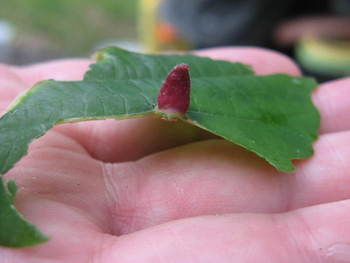
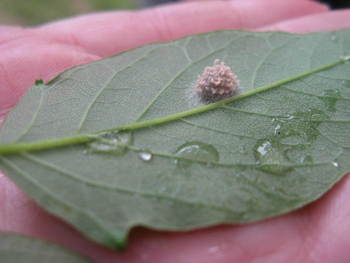
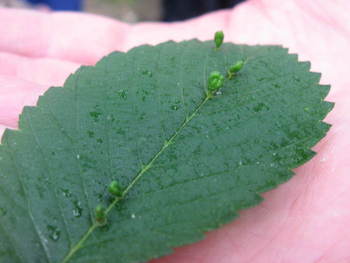
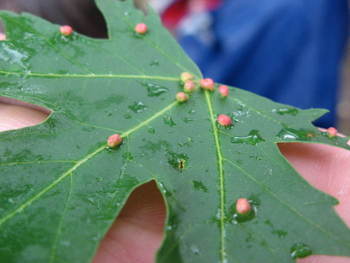
Spittle Bug
One of our adults noticed this innocuous-looking spot, which is the protective fluid produced by insects in the spittle bug family (Cercopidae). These bugs spend the winter as eggs. Upon hatching, the nymphs suck up plant fluid and immediately excrete it as a foam. If you brush away the foam, you can watch the nymph ingest more fluid to replace its spittle covering. The foam is thought to provide a moist environment for the nymph and deter predators. At least one species of vinegar fly (in the genus Drosophila) lives in this foam without harming the spittle bug.
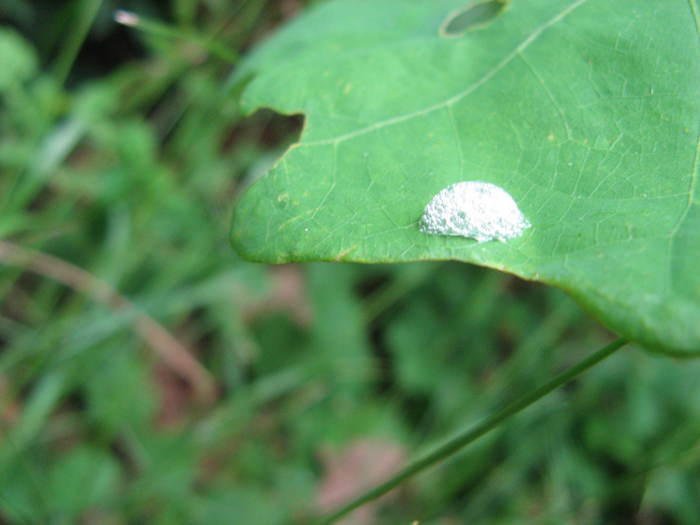
Gypsy Moths
Several of our young hunters caught gypsy moths. These caterpillars are distinguished by their paired red spots and spiny hairs. An Asiatic species, it was introduced to the U. S. in Boston in 1869 in the mistaken belief that it could make commercial silk. In its later instars (stages of metamorphosis), it feeds increasingly on beech, oak, and hickory.
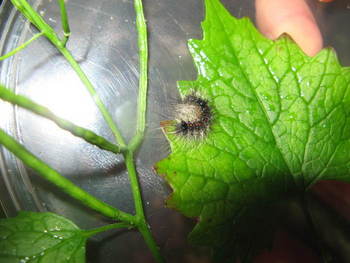
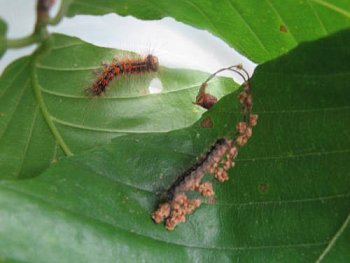
Forest Tent Caterpillar
Even more abundant this spring were the tent caterpillars. We found two species: forest and eastern. The forest tent caterpillar can be identified by the row of white “footprints” or “keyholes” on its back. Although it’s in the same genus as tent-building species, this one does not build a tent. Instead, it congregates in large masses of up to 100 individuals on tree trunks. It feeds on a great variety of woody plants, including birch, ash, blueberry, elm, maple, and oak.
The adult, often attracted to porch lights, has a pair of DARK stripes along each forewing (while the moth of the eastern tent caterpillar has two WHITE stripes).
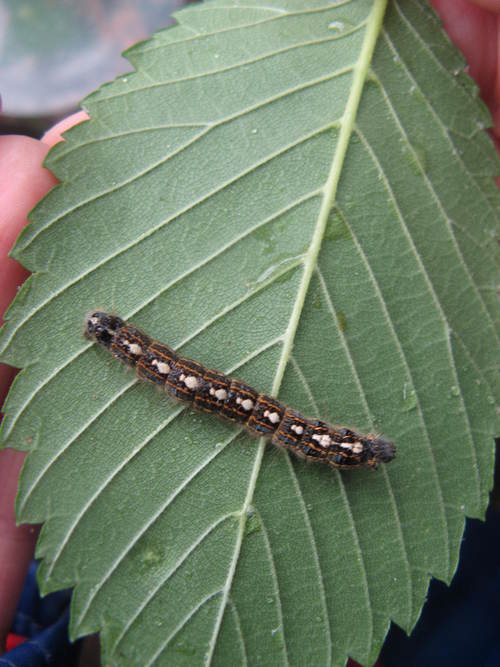
Eastern Tent Caterpillar
A true tent-builder, the eastern tent caterpillar can be told by the long white stripe down its back (shown here with a gypsy moth caterpillar). These caterpillars only venture out of their tents to feed and then return to digest their food in the safety and warmth of the tent. They are specialists on plants in the rose family (Rosaceae). In our area, they are most commonly found on the native black cherry, apple, and plum trees, but will also commonly attack horticultural cherries (crabapples and other flowering cherries). The adult moth, also found near porch lights, has a pair of white stripes along each forewing.
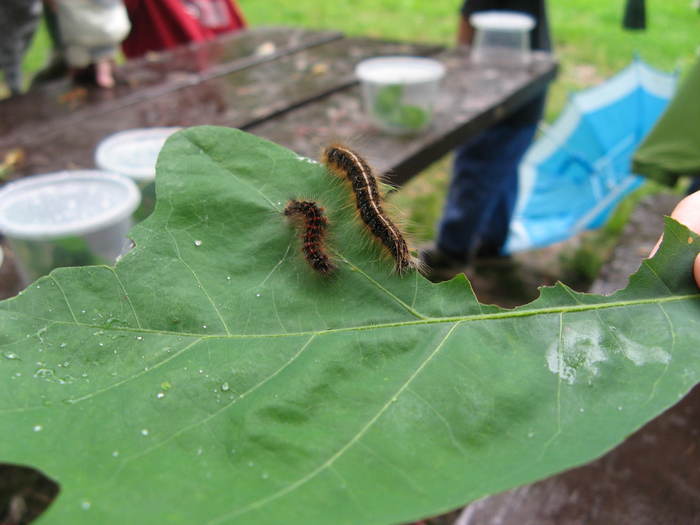
Gypsy Moth, Eastern Tent Caterpillar, Forest Tent Caterpillar
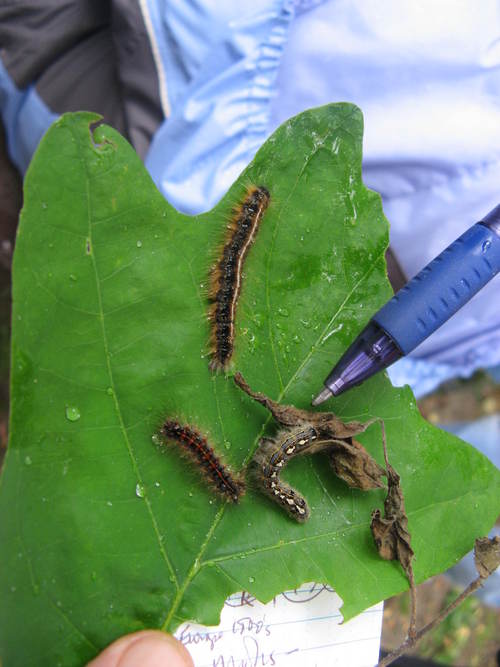
Assassin Bug
One of our young explorers collected this assassin bug, a real predator of the insect world. These bugs inject their prey with a lethal saliva that liquefies its insides, which the assassin bug then sucks out. A few members of our young audience took special pleasure in hearing about this technique. Since some species feed on cockroaches and bed bugs, the assassin bugs have sometimes been bred for insect control, although their bite can be quite painful to humans.
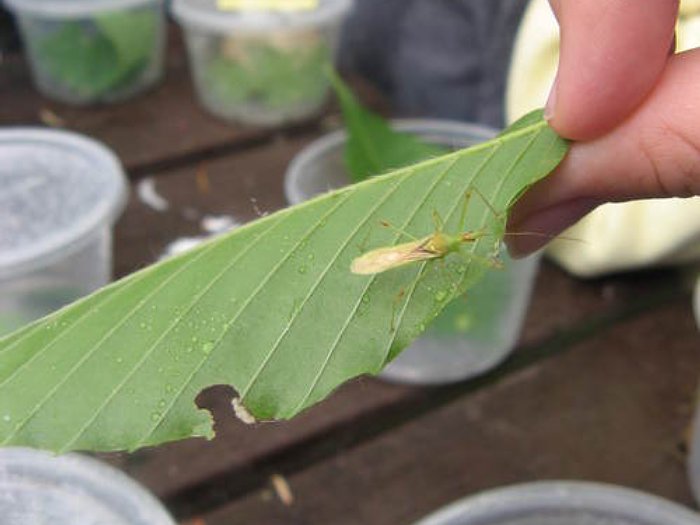
Caterpillar Poop
We learned that caterpillar poop is called “frass.” There can be so much of it that one can hear it falling from trees in the woods (this the term “frass rain”). Incredibly, some experts can identify the which caterpillars are in the upper canopy by the frass that falls to the ground.
Raising Caterpillars
John provided several helpful hints for growing caterpillars at home.
- LOCATION: Collect caterpillars among plants, not from sidewalks, so that you know what plant it feeds on.
- PLANT FOOD: Be sure to notice what plant you found it on, so that you can give it leaves from that precise plant for its food.
- AIR: Close the top of the container, and do not punch any holes in it, since there is plenty of air inside. Any holes will dry out the vegetation too quickly. In fact, it is best keep a moist napkin in the container to maintain high humidity.
- FRASS: Be sure to clean out the caterpillar “frass” (poop) occasionally to prevent formation of fungus.
Photos and text by Michael Wilpers from Laura Mol’s notes, feedback from John Lill and Stephanie Mason, and the following reference materials:
-
David L. Wagner, Caterpillars of Eastern North America (Princeton 2005)
-
Donald Stokes, Guide to Observing Insect Lives (Little Brown 1983)
-
Google Image searches


